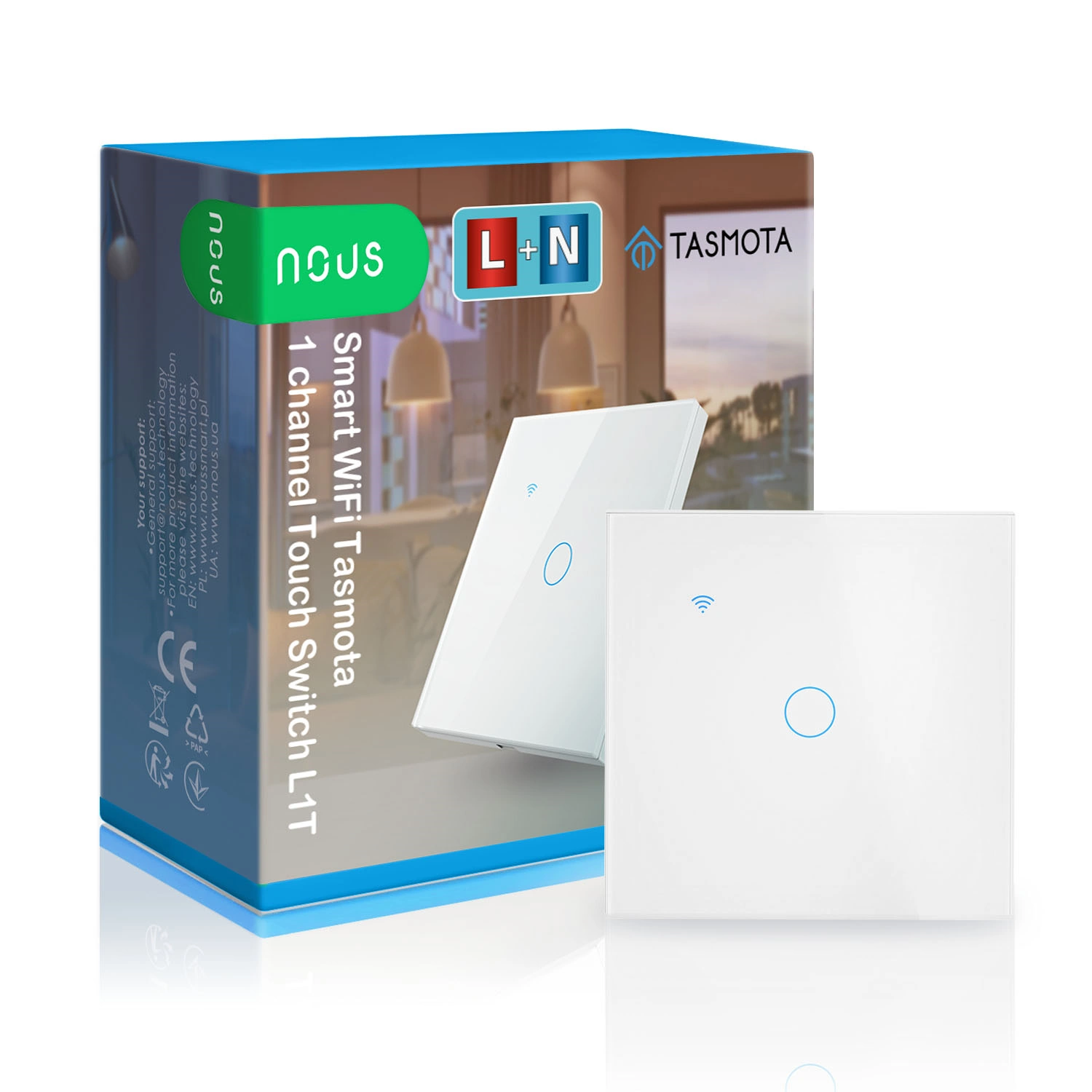Nous L1T
An example of how to integrate a Nous 1 Channel Touch Swith Module (L1T) into Home Assistant using ESPHome.
The device comes with Tasmota installed, but can be reflashed to ESPHome

GPIO Pinout
After tests, the pinout has been corrected from what is shown in the manual (GPIOs for button led and link/status led are swapped in my device)
| Pin | Function |
|---|---|
| GPIO00 | Led Link |
| GPIO01 | None |
| GPIO02 | None |
| GPIO03 | Button 1 |
| GPIO04 | None |
| GPIO05 | None |
| GPIO09 | None |
| GPIO10 | None |
| GPIO12 | None |
| GPIO13 | Relay1 |
| GPIO14 | Led Button |
| GPIO15 | None |
| GPIO16 | None |
Basic Configuration
esphome:
on_boot:
then:
- if:
condition:
lambda: "return id(light_1).current_values.is_on();"
then:
- light.turn_off:
id: button_led
else:
- light.turn_on:
id: button_led
esp8266:
board: esp01_1m
binary_sensor:
- platform: gpio
pin:
number: GPIO3
mode:
input: true
pullup: true
inverted: true
id: button_1
on_click:
then:
- light.toggle: light_1
- platform: status
name: "T1 Status"
output:
- platform: gpio
pin: GPIO13
id: relay_1
- platform: esp8266_pwm
pin: GPIO14
id: button_led_output
inverted: yes
light:
- platform: binary
id: light_1
output: relay_1
on_turn_on:
- light.turn_off: button_led
on_turn_off:
- light.turn_on: button_led
- platform: monochromatic
id: button_led
output: button_led_output
status_led:
pin:
number: GPIO0
inverted: yes